When Do Hydrangeas Bloom? Here's When to Expect Flowers
Hydrangea bloom time varies depending on the plant type and other factors!
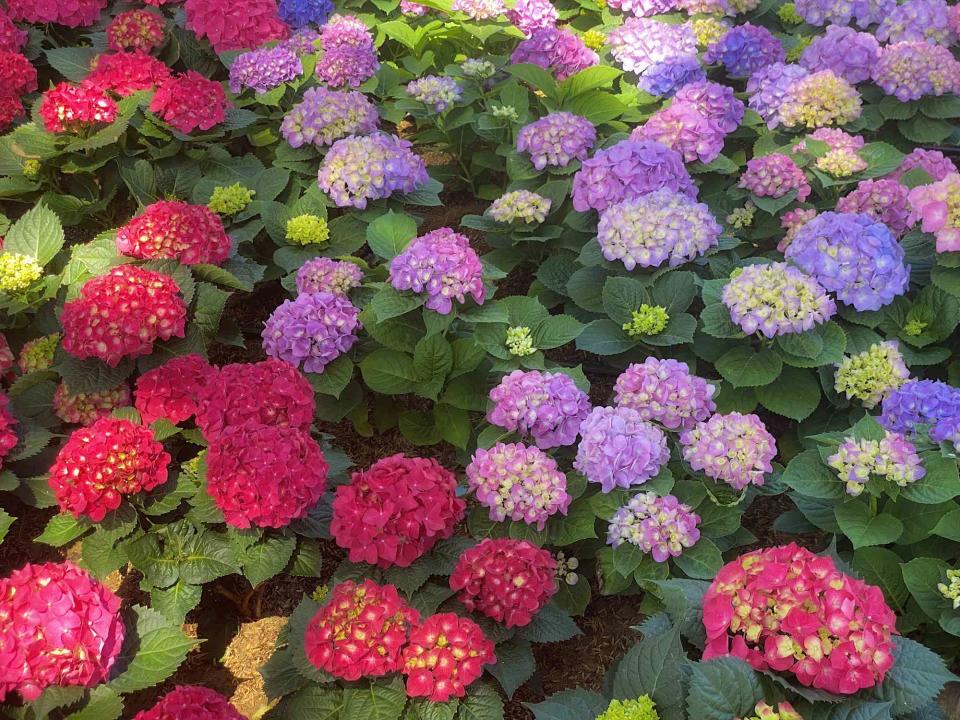
Raththaphon Wanjit / Getty Images
The question, “When do hydrangeas bloom?” is trickier to answer than it seems. While most hydrangeas flower between late spring and early fall, different types of hydrangeas have different bloom times and some varieties flower much earlier than others.
Climate, weather patterns, pruning, and plant care techniques can also influence hydrangea flowering and cause plants to bloom earlier, later, or not at all. The tips below will help you pinpoint exactly when your hydrangeas will bloom and teach you how to make hydrangeas flower more abundantly.
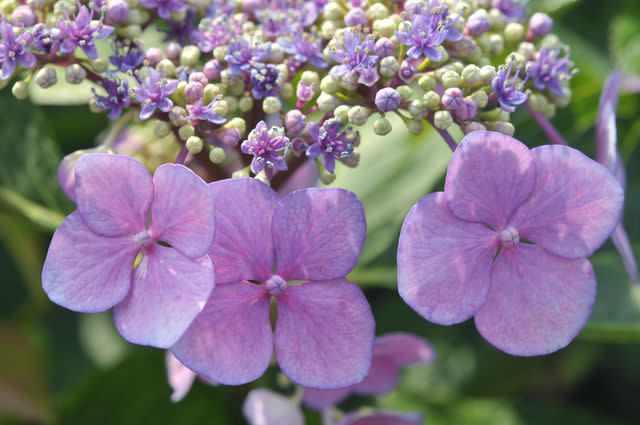
The Spruce / Evgeniya Vlasova
Want more gardening tips? Sign up for our free gardening newsletter for our best-growing tips, troubleshooting hacks, and more!
When Do Hydrangeas Bloom?
When hydrangeas will bloom largely depends on the types of hydrangeas you’re growing. Hydrangea varieties that bloom on old wood typically flower in spring or summer, while hydrangea varieties that bloom on new wood usually flower from summer to early fall. There are also reblooming hydrangeas that flower repeatedly throughout the growing season.
Hydrangeas that flower on old wood include climbing hydrangeas, oakleaf hydrangeas, and bigleaf hydrangeas like mophead, lacecap, and mountain hydrangeas. These plants bloom early in the year and typically flower from May to July.
On the other hand, panicle hydrangeas and smooth hydrangeas bloom on new wood and generally flower from June to September. These late bloomers are the stars of fall gardens and their dried flowers can remain on the plant through winter.
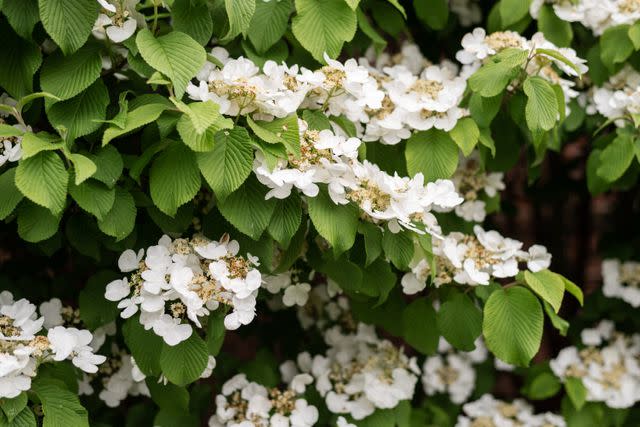
The Spruce / Loren Probish
What to Know About Hydrangea Growing Season
One important thing to note about hydrangeas is that old wood hydrangeas don’t just flower earlier than new wood hydrangeas—they also produce flower buds much earlier too.
While new wood hydrangea buds form when the plant begins growing in spring, old wood hydrangeas produced their flower buds during the previous growing season. Old wood hydrangea buds generally form in summer to fall after the plant stops flowering, and those buds remain on the plant through winter.
Pruning old wood hydrangeas before they flower in spring can remove flower buds and leave you with bloom-less hydrangeas. To avoid this, only prune old wood hydrangeas immediately after they flower and before plants produce new buds. Pruning times are more flexible with new wood hydrangeas, but they’re typically pruned when the plants are dormant in winter.
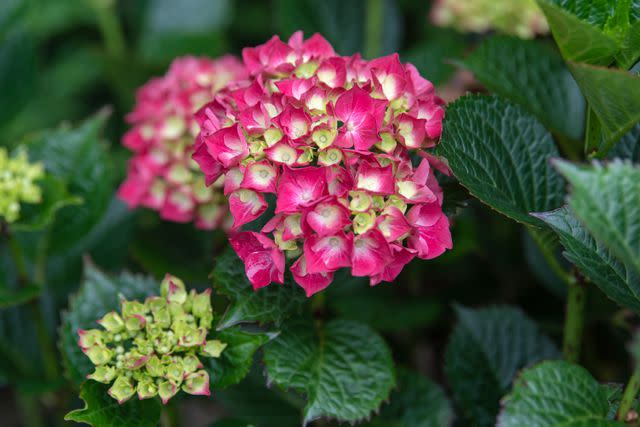
The Spruce / Evgeniya Vlasova
Ideal Growing Conditions for Hydrangeas to Bloom
Most hydrangeas grow and flower best if they’re planted in full sun to part shade and watered often enough to keep the soil moist, but not soggy. In hot climates, hydrangeas typically fair better in locations that receive sun in the morning and light shade in the afternoon. Too much intense sun and overly dry soil can cause hydrangea leaves to wilt and reduce blooming.
Hydrangeas can grow in a range of soil types, but well-draining, slightly acidic soil that’s rich with nutrients is ideal for these plants. Some hydrangeas are more cold hardy than others, so it’s important to choose the right hydrangea types for your growing location.
Panicle and smooth hydrangeas are more cold hardy than other hydrangea varieties and they can grow in gardens as chilly as zone 3. Bigleaf, oakleaf, and climbing hydrangeas are slightly more heat tolerant and they grow best in zones 5 to 9.
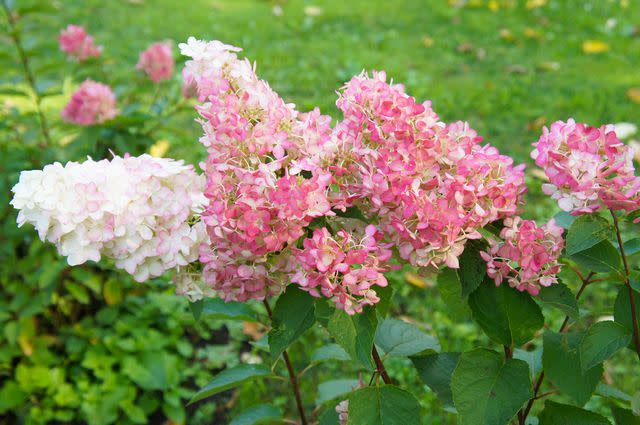
Skymoon13 / Getty Images
10 Great Hydrangea Care Tips
Understanding the specific growing needs of hydrangeas will keep your plants healthy and enhance flowering. Use these care tips to set your hydrangeas up for success.
Prune old wood hydrangeas after the plants finish flowering in late summer to early fall. Prune new wood hydrangeas when the plants are dormant in winter.
To enhance blooming, fertilize hydrangeas at least once a year in late winter to early spring with a balanced, all-purpose fertilizer.
Removing old hydrangeas flowers when they begin to fade encourages plants to rebloom.
Grow hydrangeas in partial afternoon shade in hot climates to avoid wilted leaves and heat stress.
Provide hydrangeas with about one to two inches of water per week to increase blooming. Installing a drip irrigation system can automate watering for even easier care.
Apply a two to three inch layer of natural mulch around hydrangea plants once a year to shelter plant roots and keep soil from drying out too quickly.
Follow proper spacing guidelines for the specific hydrangea varieties you’re growing. Overcrowded and stressed plants won’t flower well.
To reduce the need for pruning, choose hydrangea varieties that are the right size for your garden.
Apply an annual application of compost beneath hydrangeas to replenish soil nutrients and encourage blooming.
Shelter old wood hydrangeas with burlap in cold climates to protect flower buds from winter damage.
Read Next: How to Grow Hydrangeas From Stem Cuttings in Soil
Read the original article on The Spruce.

